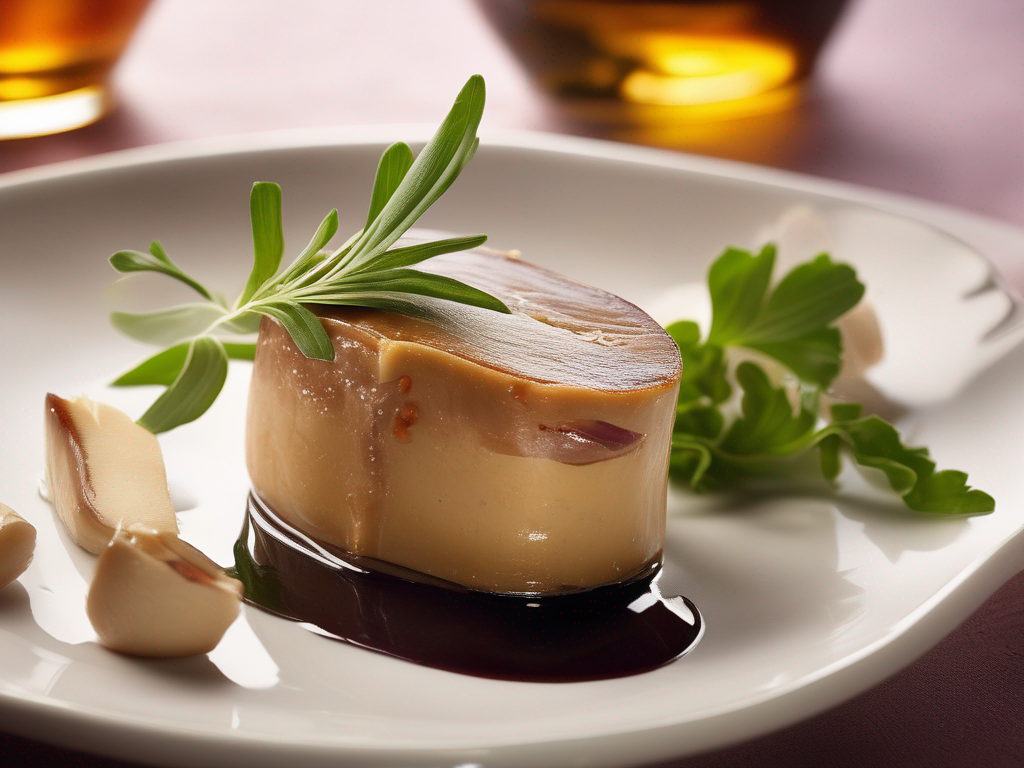
The Best Way to Store Foie Gras for Maximum Freshness
Get Your Free Food Safety Cheat Sheet
30 most common foods with instant answers. Print it and stick it on your fridge—completely free!
The Best Way to Store Foie Gras for Maximum Freshness
Foie gras, a delicacy made from the fattened liver of ducks or geese, is a gourmet treat that requires proper storage to maintain its exquisite flavor and texture. Whether you have purchased fresh foie gras or want to store leftovers, knowing the best practices for storage is essential to preserve its quality. In this guide, we will explore the optimal ways to store foie gras to ensure maximum freshness and enjoyment. (Foie gras)
Understanding Foie Gras
Before delving into storage methods, it's important to understand the nature of foie gras and why proper handling is crucial for maintaining its quality. Foie gras is a highly perishable product due to its high-fat content, which can quickly turn rancid if not stored correctly. To fully appreciate the rich, buttery flavor of foie gras, it is essential to store it properly to prevent spoilage and maintain its delicate taste and texture.
Key Characteristics of Foie Gras:
- High fat content
- Delicate flavor and texture
- Perishable nature
Best Practices for Storing Foie Gras
Proper storage is key to preserving the quality of foie gras and ensuring that it remains fresh and flavorful. Follow these guidelines to store foie gras effectively:
1. Refrigeration
- Store foie gras in the coldest part of the refrigerator, ideally at a temperature between 32°F and 39°F (0°C and 4°C).
- Keep foie gras in its original packaging or wrap it tightly in plastic wrap to prevent air exposure and odors from affecting its flavor.
- Avoid storing foie gras near foods with strong odors, as it can absorb flavors easily.
2. Freezing
- Foie gras can be frozen to extend its shelf life, but freezing may alter its texture slightly.
- If freezing foie gras, vacuum-seal it or wrap it tightly in plastic wrap to prevent freezer burn.
- Thaw frozen foie gras in the refrigerator overnight for the best results.
3. Use-by Dates
- Check the expiration date on the packaging or consult with the supplier for guidance on the shelf life of the foie gras.
- Consume foie gras before the use-by date to enjoy it at its peak freshness.
4. Handling and Thawing
- Handle foie gras with care to prevent damage to its delicate texture.
- Thaw frozen foie gras in the refrigerator rather than at room temperature to maintain its quality.
- Avoid refreezing thawed foie gras to preserve its taste and texture.
5. Proper Packaging
- Store foie gras in airtight containers or vacuum-sealed bags to prevent air exposure and freezer burn.
- Label the packaging with the date of storage to track its freshness and ensure timely consumption.
Safety Considerations for Storing Foie Gras
Ensuring the safety of stored foie gras is paramount to prevent foodborne illnesses and maintain its quality. Here are some safety tips to keep in mind when storing foie gras:
- Always wash your hands before handling foie gras to prevent contamination.
- Use separate cutting boards and utensils for raw foie gras to avoid cross-contamination with other foods.
- Store foie gras away from raw meats and other potentially hazardous foods in the refrigerator to prevent cross-contamination.
- Discard any foie gras that has an off odor, unusual color, or slimy texture, as these are signs of spoilage.
Conclusion
Proper storage is essential for maintaining the freshness and quality of foie gras. By following the recommended guidelines for refrigeration, freezing, handling, and packaging, you can enjoy this gourmet delicacy at its best. Remember to prioritize food safety when storing foie gras to ensure a delightful culinary experience every time.
Next time you indulge in [foie gras](/food/foie gras), use these storage tips to savor its rich flavor and luxurious texture to the fullest. (Foie gras)
Authoritative Food Safety References
These agencies and university labs inform every tip and health precaution we publish.
USDA FoodKeeper – Cold Storage Guidelines
Official refrigerator, freezer, and pantry timelines maintained by the U.S. Department of Agriculture.
Visit USDA FoodKeeperFDA Produce Safety Rule & Grower Guidance
Field-to-fridge handling practices that prevent contamination of fruits, vegetables, and leafy greens.
Visit FDA Produce SafetyCDC Foodborne Illness Prevention Hub
Surveillance-backed guidance on pathogens, symptoms, and steps to reduce foodborne illness risk.
Visit CDC Food SafetyUC Davis Postharvest Technology Center
University research detailing optimal storage atmospheres for produce after harvest.
Visit UC Davis PostharvestPenn State Extension – Home Food Preservation & Safety
Peer-reviewed extension bulletins on safe canning, chilling, and reheating practices.
Visit Penn State ExtensionGet Your Free Food Safety Cheat Sheet
30 most common foods with instant answers. Print it and stick it on your fridge—completely free! Want more? Upgrade to the complete guide with 70+ foods.
Scan your food directly and get instant safety info using our AI-powered camera feature.